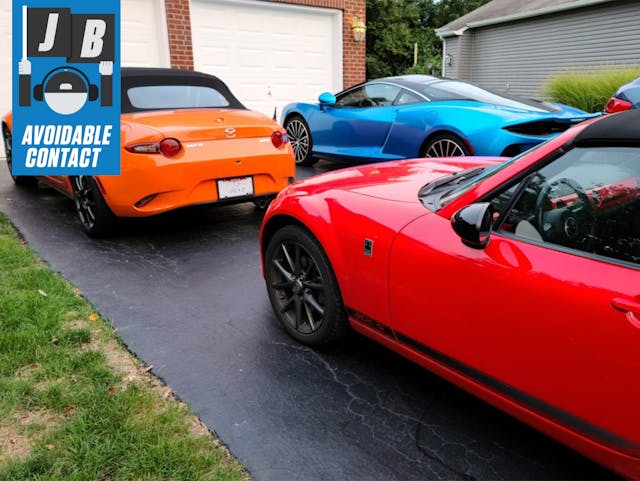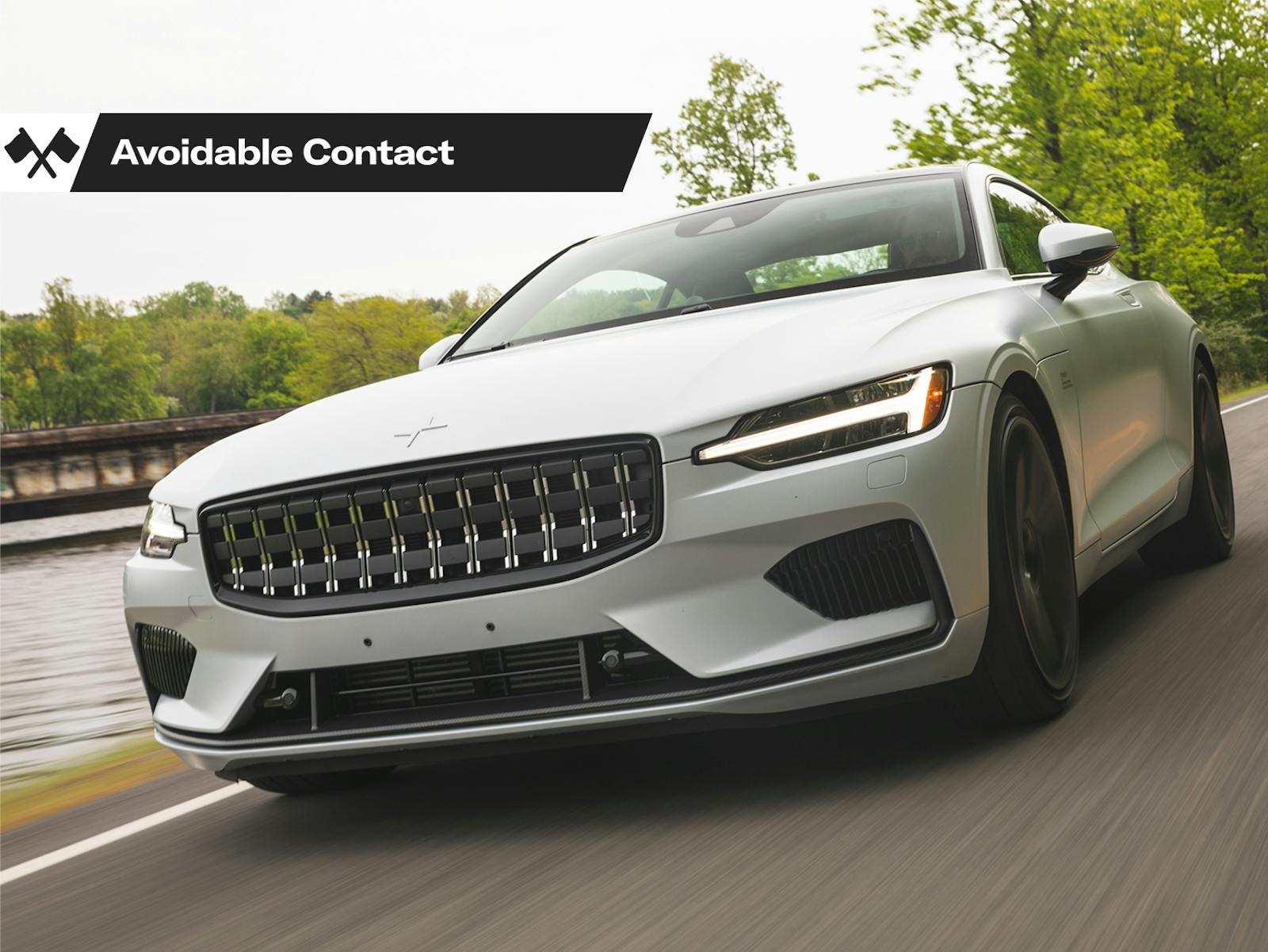Avoidable Contact #78: New cars with no excuses necessary

Yesterday we published an introspective column by Aaron Robinson, the accomplished and highly-regarded Executive Editor of the Hagerty Drivers Club magazine. Although Aaron’s time in the business far exceeds mine—I was still doing midnight street racing for pathetic amounts of cash when he joined Car and Driver as a marquee contributor—he and I are basically of an age so I have a tremendous amount of sympathy for much of what he writes.
Particularly when it comes to how music is nothing but noise nowadays. I mean—for Pete’s sake, the #1 single “Say So” by “Doja Cat” is just Chic’s “Good Times” minus all the interesting parts! Yet I remember my mother, who was a professional coloratura, griping about my Iron Maiden records in similar fashion, all the way back in 1982. The whole purpose of young-person music is to exclude old people. Otherwise it’s no good. Sometimes the definition of “young” and “old” can be malleable; the music critic of the Times complained a while ago that “Rach 3,” my favorite piano piece to hear (but not to play), was “a weepy tune … made to order for virtuosos on the make.” If Rachmaninoff were still alive, this dude would tell him to get off his lawn. By my calculations, we are only three or four years away from the day when some parent will tell their kid something like, “When I was your age we had REAL music. GOOD music. Music with a real emotional message. Like 2008’s ‘Smack That,’ by Akon featuring Eminem, where they pronounce the name of an entry-level Lamborghini as “Gah-lard-o.”
You get the idea. Age ain’t nothing but a number, but it’s a number that inserts a sly and cynical distance between your eyes and your brain. Perhaps for that reason alone, I find myself nodding along with Aaron when he decries the death of the interesting automobile. I don’t like much of what I see in showrooms nowadays, and some of what I do like—the Genesis G90 5.0 Ultimate, for instance—is transparently aimed at old people. It’s also easy to agree with his thoughts on the hollowing-out of enthusiast-oriented automotive selections in today’s showrooms.
That being said, I want to offer a few optimistic counterpoints. Let’s start with an honest evaluation of the cool cars you can get brand-new at the moment. The ND2-generation Miata, for example. This is a better car than any Miata before it. Period, point blank. It’s not just faster around a racetrack—if we allow that to be the litmus test, we must of necessity venerate such risible junk as the Cayenne Turbo GT2RSK-Whatever and my own race-prepped Honda Accord—it’s more fun to drive on the street, during the commute, in the city, everywhere you go. The last time we got an update this good was when Gibson went from the trapezoid-tailpiece ’52 Les Paul to the ’58 sunburst.
If you can only buy one car in the next ten years, make it an ND2 Miata. Admittedly, it’s no longer surrounded by great competition the way its 1990 predecessor was—but you’re not buying a competitive set, you’re buying one car. Don’t want an ND2 Miata? Buy a Subaru BRZ, which is a great choice in many ways and highly satisfying to drive at that fabled tenth tenth. Either one of these four-cylinder sledgehammers would have laid waste to the “golden years” of 1990-2000. The same is true for the Hyundai Veloster N, which would have given every lukewarm “hot hatch” of the past thirty years an atomic wedgie on track or road with no difficulty whatsoever.
So there you have it. Three great cars, all with a stick shift, available for less than the average transaction price. Unless you’re in the market for a quartet of new vehicles, what’s your gripe? Is it that you have more money in your pocket than you’d need to buy a Miata? Try a Camaro ZL1, a Shelby GT350/500, a Challenger T/A 392. The list is very long. I can think of ten new cars for sale right now that would cause the autowriters of 1990 to fall over dead with amazement.
Aaron points out that today’s bread-and-butter cars are pretty unenthusiastic, and he’s right. Yet that’s always been the case. The early Accords were delightful cars, but most of them were sold with automatics and carburetors. The Datsun 510 and BMW 2002 didn’t sell enough units together to keep the Pinto plant running for a summer. I have a lot of fondness in retrospect for GM Colonnade coupes and the like, but at the time Car and Driver used those dinosaurs for literary target practice. The average new car sits up pretty high nowadays; the same was true in 1950.
Ah, but what about the future? Not that “Future” fellow who sings into an Auto-Tune box about “she belongs to the streets,” mind you, but the actual future. In the near term it looks tough, but it’s looked that way before. The late Forties didn’t have a lot of excitement for new-car buyers, other than the fact of actually being able to buy a new car. Let’s not even talk about the “malaise” era of the ’70s and early ’80s, when it looked like Joan Claybrook and Ralph Nader would be putting us all into forty-horsepower padded cells.
I predict the market will break one of two ways in the next ten years. In Scenario A, there’s no magic battery breakthrough and the regulators have to grudgingly accept the internal combustion car as a fact of life. In that scenario, there will be a lot of attention paid to making the cars lighter and more efficient, the same way there was in Europe during the austerity years. That’s good news, and it will lead to great cars. God willing, we’ll get a clutch pedal in one or two of them.
In Scenario B, the magic battery beans show up on time and it becomes practical to build and sell electric cars to a mass audience. This will likely lead to a renaissance of automotive customization. You’ll be amazed what you can do with a car when the running gear is decentralized to a battery “skateboard” and four hub motors. A generation of Arduino and Raspberry Pi hackers will find it child’s play to “overboost” commodity-grade electric cars. Kids will get Tesla motors out of junkyards and put them in basic Toyota transportation pods, controlling them with a few hundred lines of C++ and a video-game accelerator pedal. A man-in-the-middle GPS attack will convince your decade-old electric Bentley that it’s really at Laguna Seca, not in Manhattan, and it’s therefore cleared for maximum acceleration.
This electric future will be tough going for people of my generation, but look at it this way: My SCCA Neon race car runs a 2.4-liter Plymouth Voyager engine 1000 rpm past the original rev limit thanks to something called a MegaSquirt—a computer in a box that controls fuel and spark to a degree of insane precision thought to be sci-fi stuff in 1990. The Baby Boomers don’t necessarily like that sort of “tuning,” but it works for me. Similarly, Generation Z will have hot-rod tricks that are just as old-folks-exclusionary to me as my little box of aftermarket microprocessors would have been to a Woodward Avenue street racer of 1968.
There will be great new cars, and great new music, in 2030 and beyond. It just won’t be made for, or even accessible for, people like me and Aaron. It’s kind of unfair in a way because our Generation, yclept “X” because our parents chose playing doubles tennis and skiing in Vail over staying home with us, has always been subject to the tastes of our parents. I know a lot of 45-year-olds who can name a hundred Beatles tunes, for example, or who can rhapsodize about the Jaguar E-Type. It rankles a bit that we won’t be able to force our kids to venerate Guns N’ Roses or the Mitsubishi 3000GT VR-4.
So be it. Aaron’s right that there are enough enthusiast cars in the garages of America to keep us busy for the rest of our lives and then some. He and I are square; he has Lamborghinis, I have that minivan-motor Neon. Don’t worry about us. The mandate we have for the future is to help the next generation find its way to a durable, modern, and sustainable—in both the ecological and non-ecological sense—form of automotive happiness. I have no doubt that we will succeed in this endeavor. That’s our responsibility; to hand the mantle over to the kids, and then to let them take the wheel. In the meantime, I hope all of you will seriously consider the purchase of a brand-new modern enthusiast vehicle in the near future, if and when you can do so. Alternately, you’re free to turn away from the great cars out there right now and indulge in a few lyrics with which both Aaron and I are no doubt familiar:
Let us close our eyes
Outside their lives go on much faster
Oh, we won’t give in
We’ll keep living in the past

